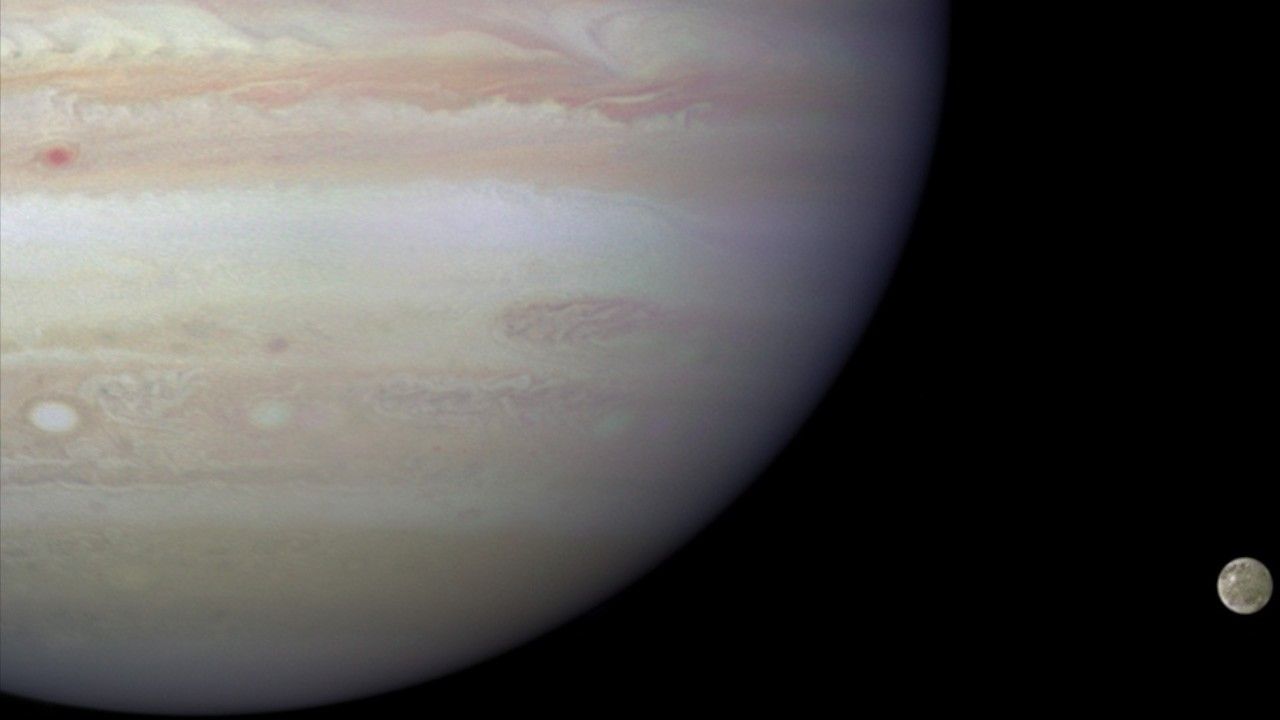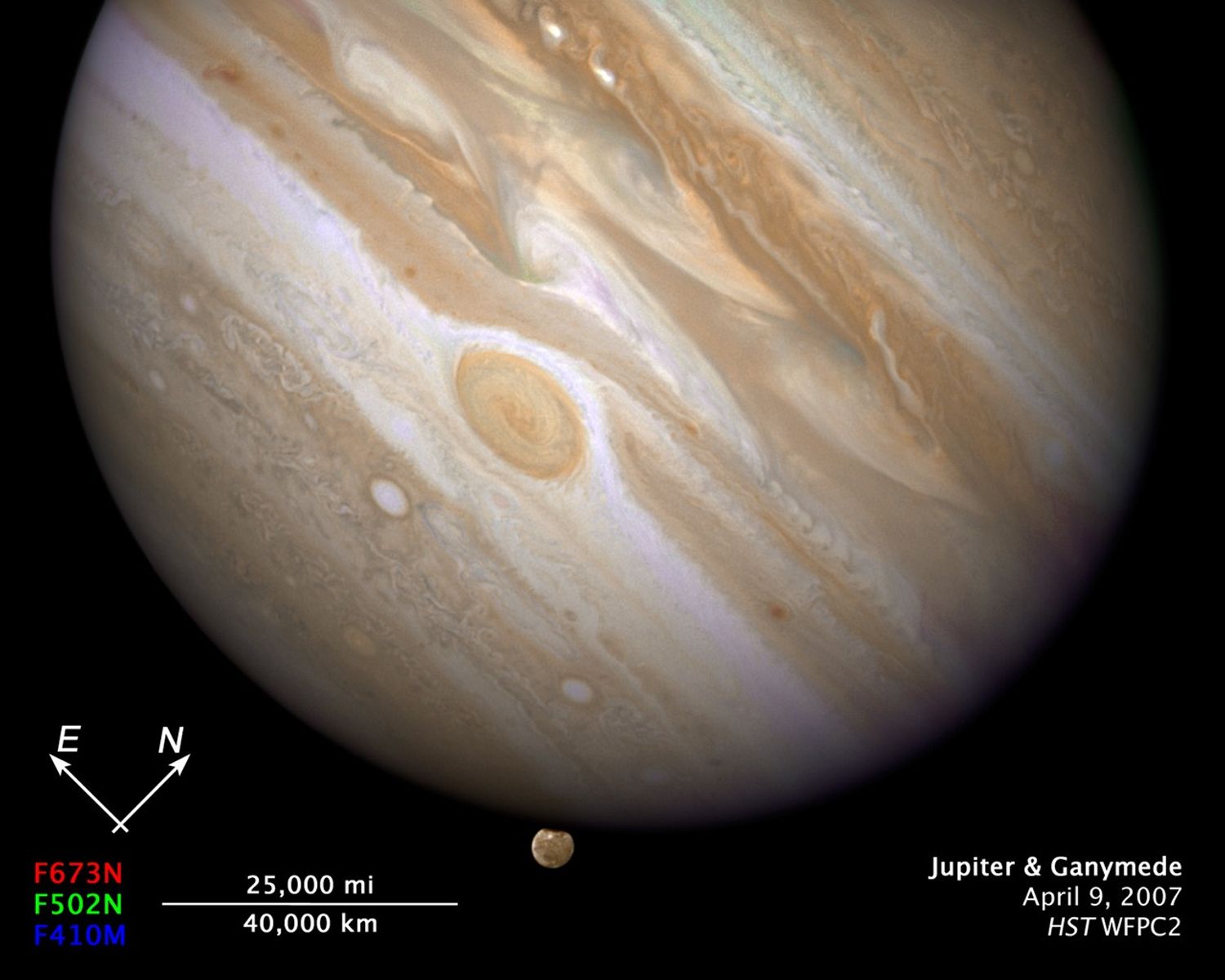1 min read
Ganymede Disappears Behind Jupiter

This series of images taken with NASA's Hubble Space Telescope shows Jupiter's largest moon, Ganymede, disappearing behind the planet.
Ganymede completes an orbit around Jupiter every seven days. Because Ganymede's orbit is tilted nearly edge-on to Earth, it routinely can be seen playing a game of "peek-a- boo," passing in front of and disappearing behind its giant host, only to reemerge later. Composed of rock and ice, Ganymede is the largest moon in our solar system. It is even larger than the planet Mercury.
The top images show Ganymede next to Jupiter. The images were taken in blue and red light on Jan. 19, 2005 with Hubble's Advanced Camera for Surveys. The close-up images at bottom follow Ganymede as it ducks behind Jupiter a few minutes later.
About the Object
- DistanceDistanceThe physical distance from Earth to the astronomical object. Distances within our solar system are usually measured in Astronomical Units (AU). Distances between stars are usually measured in light-years. Interstellar distances can also be measured in parsecs.The semi-major axis of Jupiter's orbit about the sun is 5.2 astronomical units (483 million miles or 778 million km).
- DimensionsDimensionsThe physical size of the object or the apparent angle it subtends on the sky.The planet has a diameter of roughly 88,789 miles (142,984 km) at the equator.
About the Data
- InstrumentInstrumentThe science instrument used to produce the data.HST>ACS/HRC
- Exposure DatesExposure DatesThe date(s) that the telescope made its observations and the total exposure time.Jan. 19, 2005
- Object NameObject NameA name or catalog number that astronomers use to identify an astronomical object.Jupiter, Ganymede
- Object DescriptionObject DescriptionThe type of astronomical object.Planet with Jovian Satellite Visible
- Release DateDecember 18, 2008
- Science ReleaseHubble Catches Jupiter’s Largest Moon Going to the ‘Dark Side’
- Credit
Related Images & Videos

HST/WFPC2 Image of Jupiter and Ganymede Taken April 9, 2007
NASA's Hubble Space Telescope has caught Jupiter's moon Ganymede playing a game of "peek-a-boo." In this crisp Hubble image, Ganymede is shown just before it ducks behind the giant planet. Ganymede completes an orbit around Jupiter every seven days. Because Ganymede's orbit is...

Jupiter's Largest Moon Plays a Game of 'Peek-A-Boo'
This movie shows Ganymede, Jupiter's largest moon, as it ducks behind the giant planet. Astronomers combined a series of images taken with the Wide Field Planetary Camera 2 aboard NASA's Hubble Space Telescope to make the 18-second movie. The 540 movie frames were created from...
Share
Details
Claire Andreoli
NASA’s Goddard Space Flight Center
Greenbelt, Maryland
claire.andreoli@nasa.gov






























